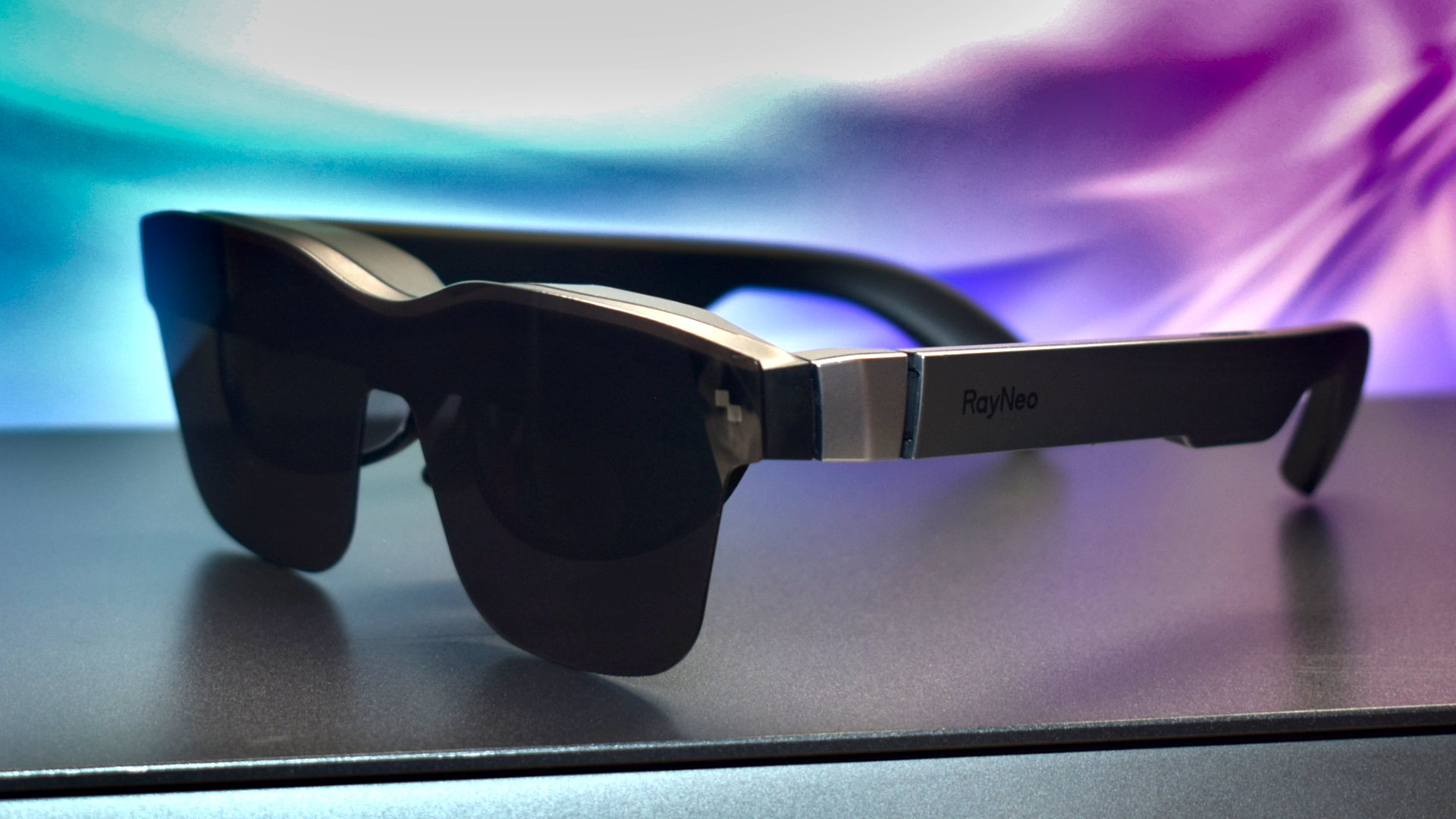
Smart glasses. I can’t stop talking about them, and companies keep releasing new ones at a rate that’s almost impossible to keep up with. And here we are, back at it with a fresh pair of frames from TCL RayNeo: the Air 2S AR glasses.
If you’ve not yet had the pleasure of hearing about the tomorrow-tech that is AR glasses, they’re a particular form of smart glasses that exist somewhere between a VR/AR headset and a wearable monitor.
They use a projector-and-prism-like configuration to present giant, virtual displays capable of mirroring the screens of USB-C DisplayPort Alt. Mode-enabled laptops, tablets, and smartphones directly through the glasses’ panels or in more complex AR scenes through external software designed to simulate a spatial computing experience.
Worry not if that sounds like a load of space-age, technical gibberish to you. Welcome to the future, my friend. Now forget all the old wives’ tales about sitting too close to your TV, and let’s get square-eyed together and explore what makes the TCL RayNeo Air 2S AR specs so special.
TCL RayNeo Air 2S AR glasses: Price and availability
When the RayNeo Air 2S AR glasses launch on Thursday, August 15, 2024, they will be available for $399 from the RayNeo online store.
Placing a $10 deposit before the launch date grants you an early bird special saving of $100 on the official launch day, bringing the price for RayNeo’s latest Air 2S glasses down to just $299.
RayNeo’s Air 2S AR glasses are most comparable with the $359 XREAL Air 2 AR glasses, which launched at a similar price in November 2023 and share several similar design and function traits.
That’s nothing to sneer at either, as XREAL’s AR specs are some of the finest on the market, and being able to be so closely compared to them is a real marker of quality for RayNeo’s smart glasses.
TCL RayNeo Air 2S AR glasses: Design
AR smart glasses have fallen into something of a habit when it comes to design. We should really ditch the smart glasses moniker altogether and start referring to them as wired Wayfarers, as the vast majority of these devices have been somewhat indulgent when helping themselves to the form and style of Ray-Ban’s classic sunnies.
However, at least RayNeo is attempting to apply a unique twist by eschewing the Wayfarer’s thick rims and adopting a visor-like front panel that only shares the general outline of this iconic eyewear.
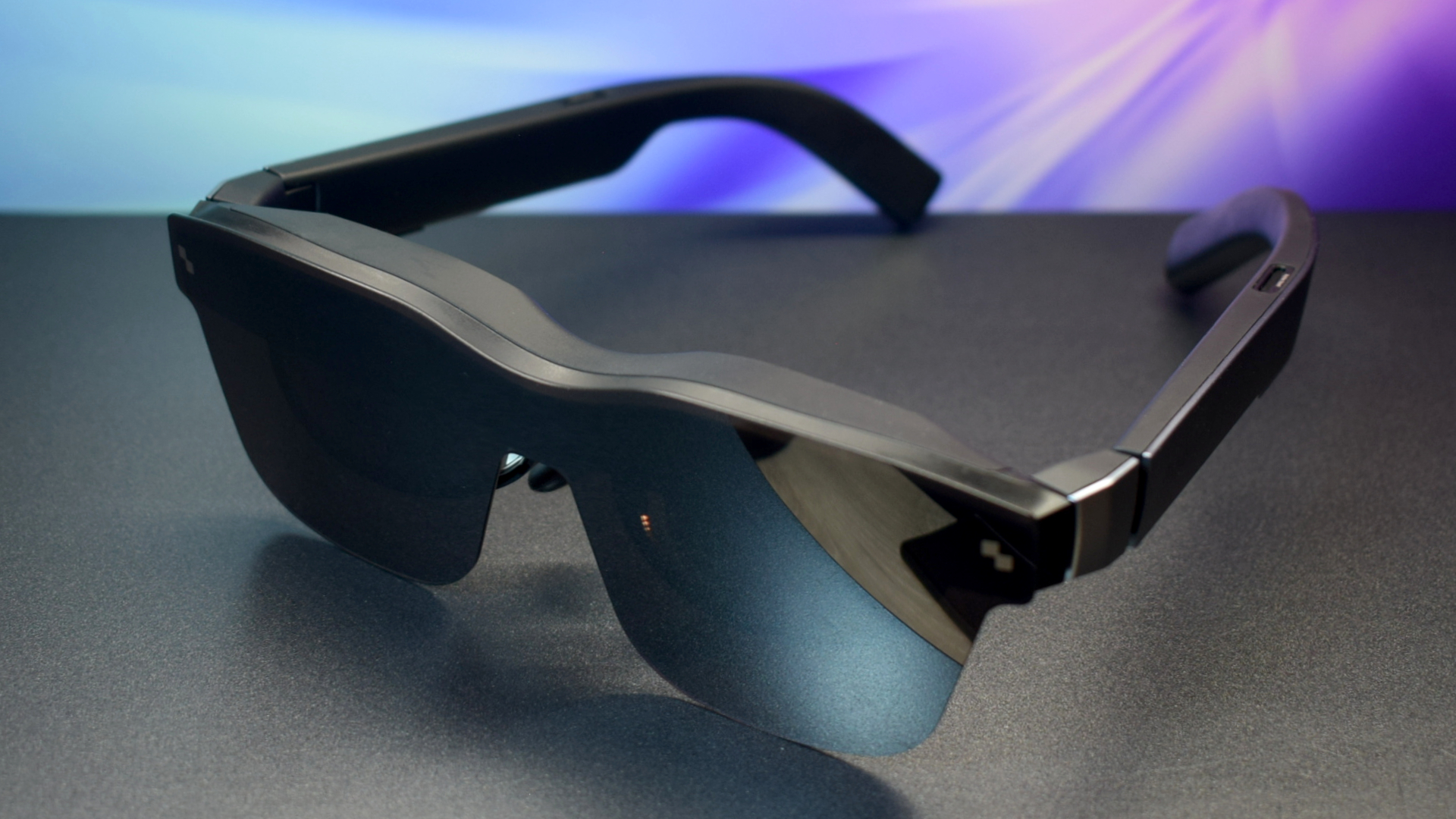
We should really ditch the smart glasses moniker altogether and start referring to them as wired Wayfarers
I’m also a big fan of the silver temples, with their three-point tilt adjustment and ultra-flexible hinges. Their lightweight build (just 2.7 ounces, or 79 grams in weight) is impressively comfortable to wear even over long periods.
The frames look great, maintaining a familiar style while branching off in their own direction. However, they still run into the same old problem that all AR glasses of this kind run into: the front of the frames overshoot your face by about half an inch or so.
It’s by no means something that would make me not want to wear them, but it immediately draws the eye at certain angles and places these frames in the Uncanny Valley of sunglasses.
What could potentially make me not wear the RayNeo Air 2S AR glasses is the heavy tint applied to its visor. If you’re outside on a bright and sunny day, then this isn’t likely to be too much of an issue.
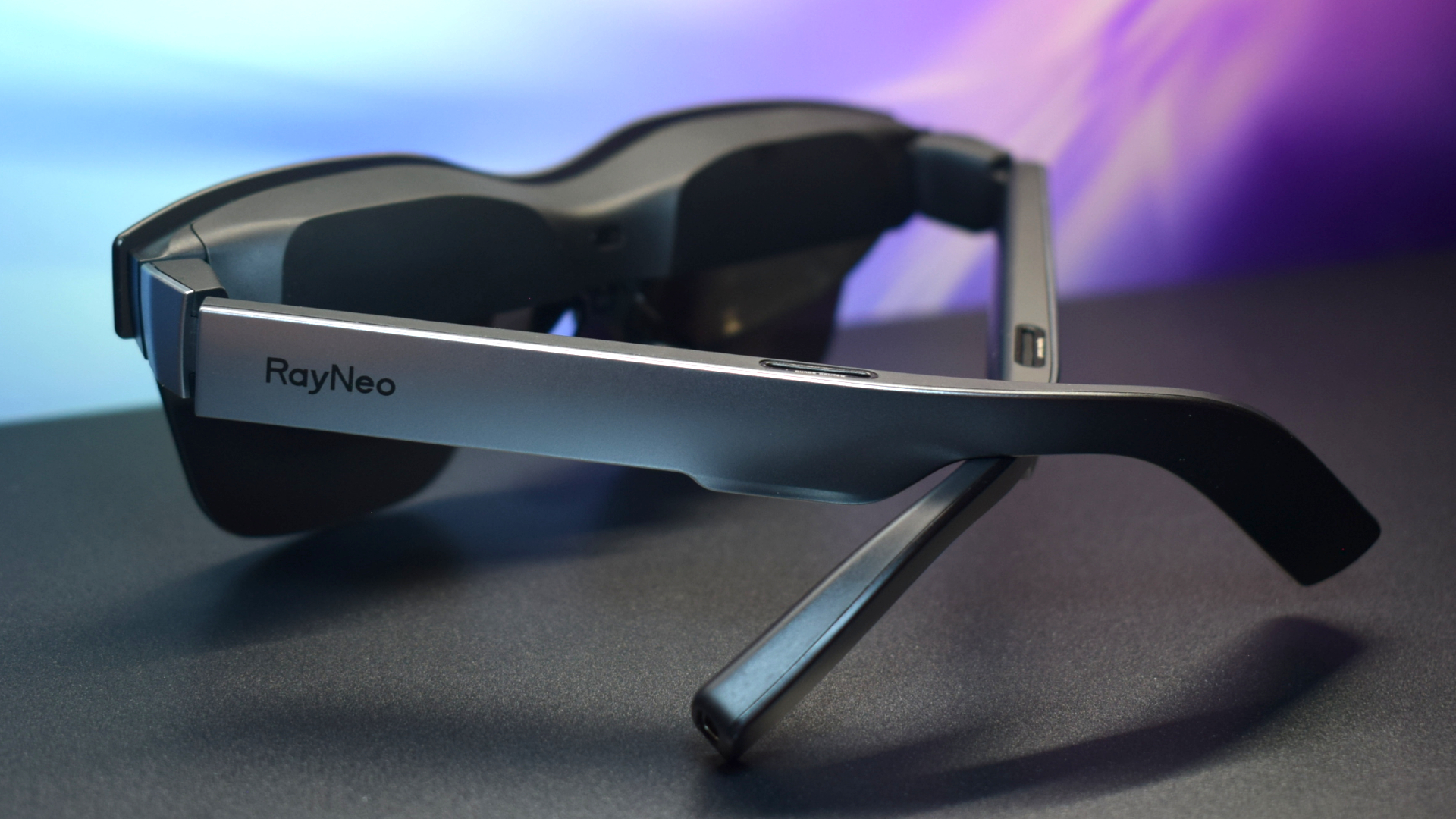
However, if the weather is overcast or dull, or you just feel like wearing them indoors to play a game or watch some shows and movies, that heavy tint can blot out a considerable amount of your vision.
Speaking of vision, the RayNeo Air 2S doesn’t feature any IPD dials to help adjust for myopia, meaning anyone requiring prescription lenses will either have to invest in potentially expensive prescription inserts or wedge RayNeo’s glasses over their own and get an improper visual experience that causes blurriness around the edge of the display and cut portions of the top or bottom of the panel out of the range of the AR viewport.
TCL RayNeo Air 2S AR glasses: Setup and software
The Air 2S AR glasses require no special software or drivers to get up and running and can connect to any compatible DisplayPort over USB or DP Alt. Mode laptop, smartphone, gaming handheld, or tablet right out of the box.
If you’re planning to use these smart glasses with an Android phone that doesn’t feature any DisplayPort output or a non-USB-C iPhone (iPhone 14 or lower), then you’ll need to pick up TCL’s $99 MiraScreen Potable Adapter to get things working appropriately.
RayNeo offers two optional pieces of software: the RayNeo XR app for Android (version 8 and above) and the RayNeo Mirror Studio app for Windows PCs, both of which are available to download from the RayNeo website.
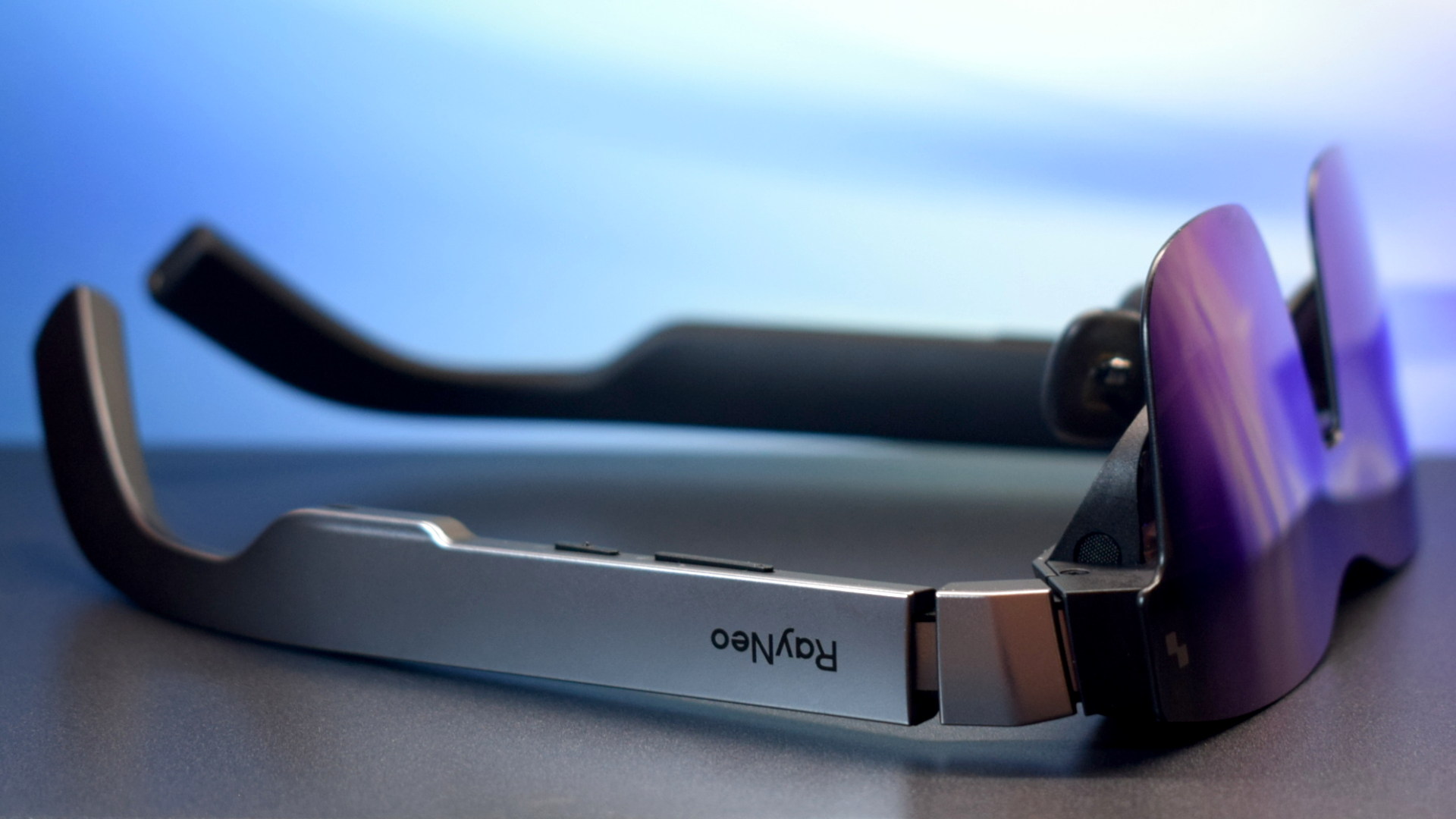
RayNeo XR is a small AR sandbox for smartphones and tablets that allows you to choose from a preset selection of visual demos, small games, and a web browser. Its offerings are limited, and none of the games seemed compatible with my device. Accessing the app is also a headache, as you can’t download it from the Google Play Store, meaning you’ll have to install it manually on your phone.
The RayNeo Mirror Studio app for Windows attempts to create a more familiar AR experience by allowing you to preselect certain windows to be shown within a 3D space. There’s a considerable amount of ghosting within this app, containing little to no signposting on how to get it working correctly.
Most of my attempts to use it resulted in my inability to interact with any of the windows I’d selected to place within the AR space, and the experience was ultimately more frustrating than fulfilling.
TCL RayNeo Air 2S AR glasses: Display
The RayNeo Air 2S AR glasses feature two full HD (1920x1080 per-eye resolution) Sony 0.55-inch MicroOLED displays capable of projecting a virtual impression of a 201-inch display at a perceived distance of six meters.
The resulting image is smooth (up to 120Hz), ultra-crisp (49 PPD), impressively vivid (16.7 million colors), and offers decent black levels with a 100,000:1 contrast ratio. What results is a display that works incredibly well for media and gaming, offering impressive visuals that can keep pace with high refresh rates.
The Air 2S glasses offer a superscreen viewing experience for movies and TV shows with spatial audio to boot. I watched Blade Runner 2049 practically in awe of the neon hues and irradiated oranges that dress Los Angeles and Las Vegas blooming out from the screen. In gaming, the Air 2S keeps up with even fast-paced shooters like Call of Duty: Warzone or competitive titles like Marvel Rivals.
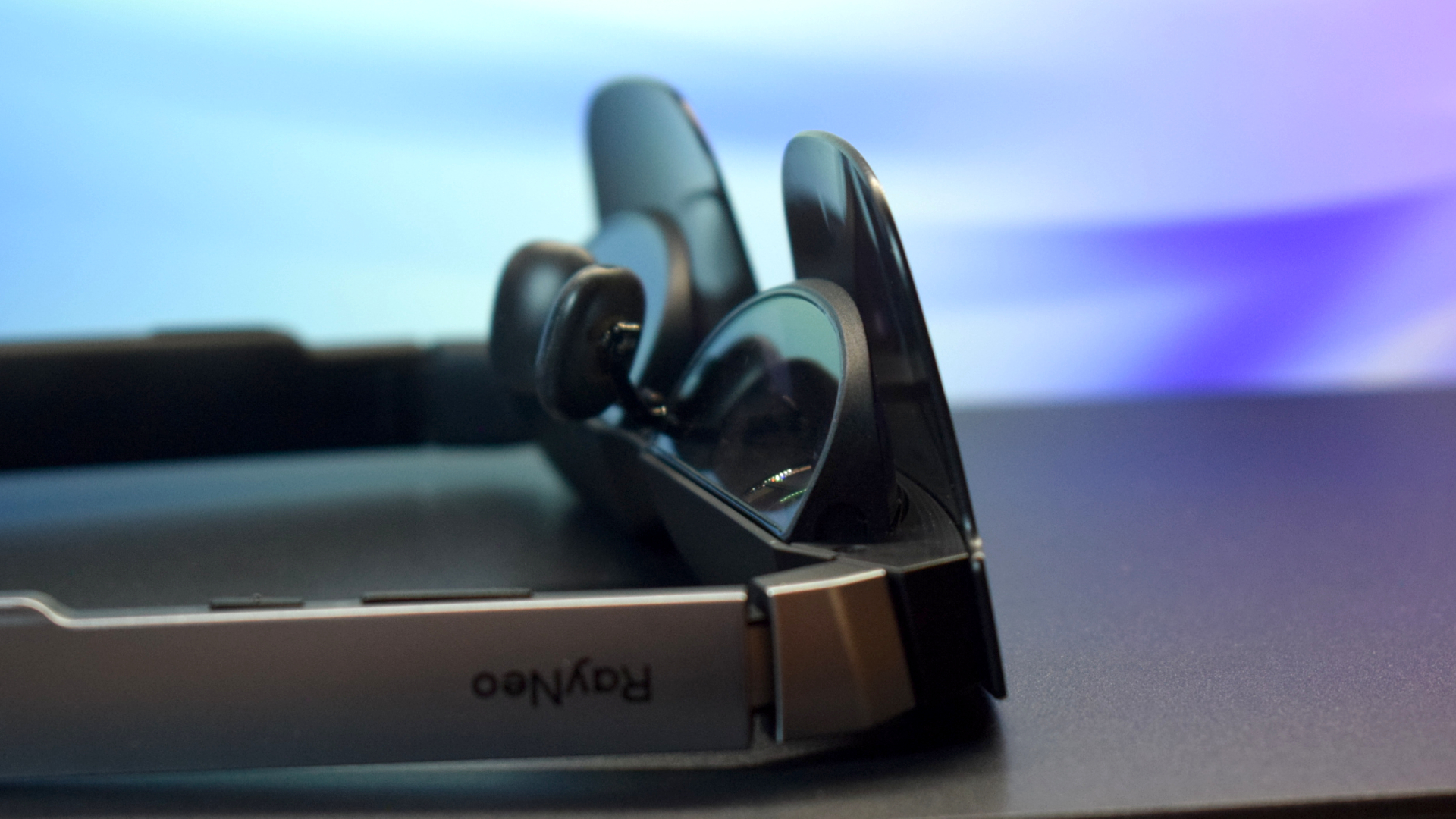
I don’t think you should be overly concerned about audio bleed. Not only are these frames pretty well dampened, but if anyone has the pleasure of overhearing them, they’ll probably thank you.
While the results are fantastic, especially thanks to the display’s almost edge-to-edge clarity, its most reliable mode is the static mirroring of another device. This greatly limits the features available to take full advantage of RayNeo’s frames, leaving this display feeling underutilized. A lack of well-performing software prevents the Air 2S from really shining, even if its next-generation light engine doesn’t.
RayNeo claims that its Air 2S AR glasses have a peak brightness of 5,000 nits, but thankfully, that translates to around 600 nits of brightness to the human eye after passing through the angled projection lens.
Frankly, I’d have believed the first number because RayNeo’s displays offer a beaming image that’s pretty relentless against the backdrop of its tinted visor. In fact, that heavily tinted visor may be making the image pop all the more as it offers more of a contrasting backboard than other glasses.
Still, it’s no eyesore. Not to me at least, those needing to tone things down can adjust the brightness of the display using the right-hand temple rocker switch or by tapping the action button to bring up an on-screen menu and adjusting the color profile between standard, vibrant, and soft.
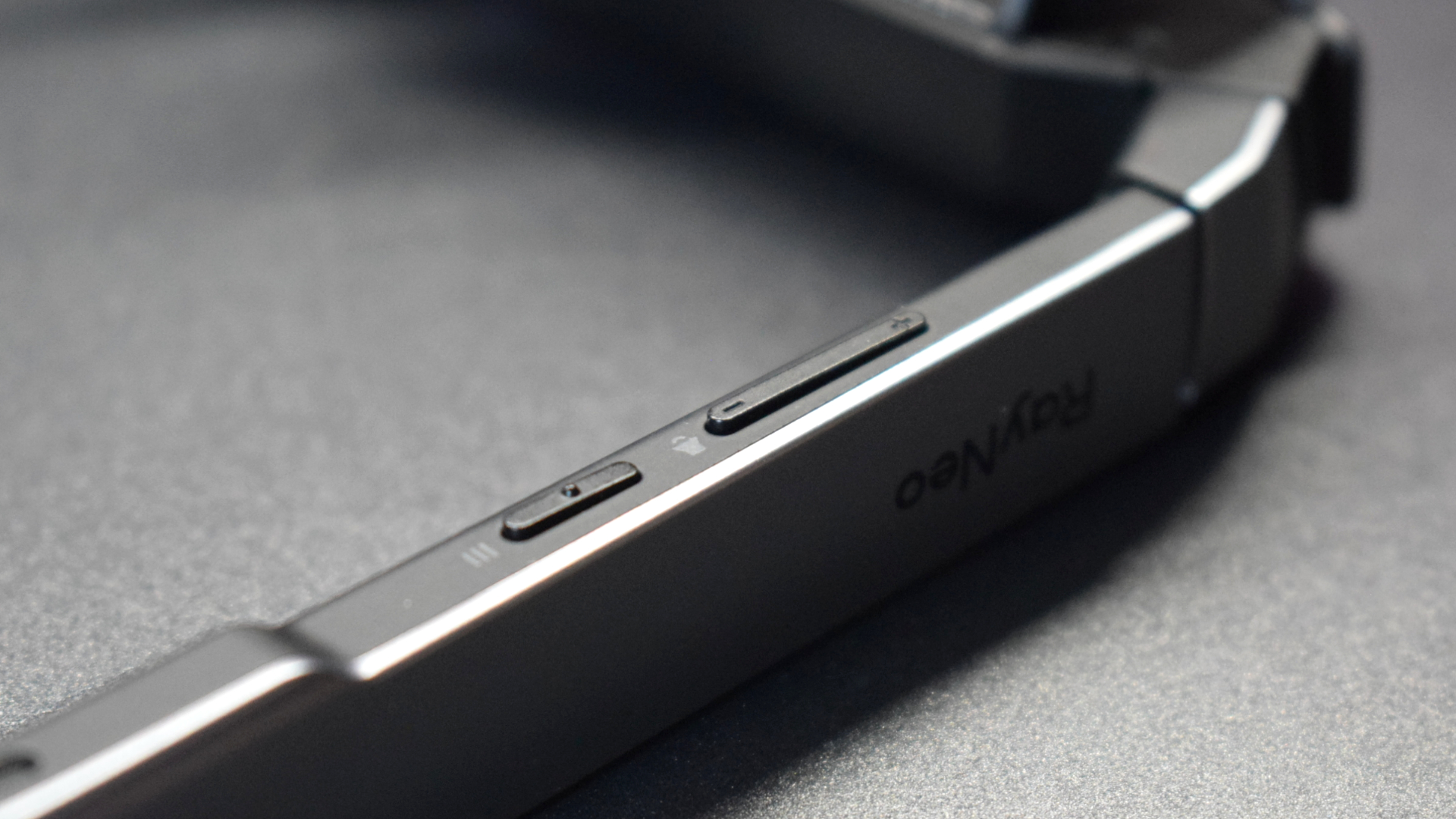
The same menu also features an option to activate whisper mode, an audio setting that enables a specific EQ profile that dampens audio bleed. However, for the first time while reviewing smart glasses like this, I don’t think you should be overly concerned about audio bleed. Not only are these frames pretty well dampened, but if anyone has the pleasure of overhearing them, they’ll probably thank you.
TCL RayNeo Air 2S AR glasses: Audio
Typically, this portion of a smart glasses review goes roughly the same way: Open-ear audio is excellent; it’s so immersive, but there’s just something missing. Usually, it’s the thump of the bass, noticeably AWOL from sounds, scores, and songs that radiate from the temples of these devices.
However, there’s some wizardry afoot with the RayNeo Air 2S. Serious audio wizardry.
Last week, I reviewed the Jlab Jbuds Frames, a clever pair of Bluetooth speakers that offer a smart glasses-like experience at a fraction of the price. However, they did sand down the edge to just about every music track played through them. Still, what do you want for less than $15?
I likened the JBuds Frames to an introductory experience, a stepping stone to smart glasses, promising that more expensive models have a more sophisticated and premium audio output.
At the time, I was referencing the XREAL Air 2 AR glasses, which deliver rich, crisp, and crystal-clear soundscapes. However, now I mean the TCL RayNeo Air 2S — hands-down the most impressive open-ear audio I’ve encountered in the smart glasses category.
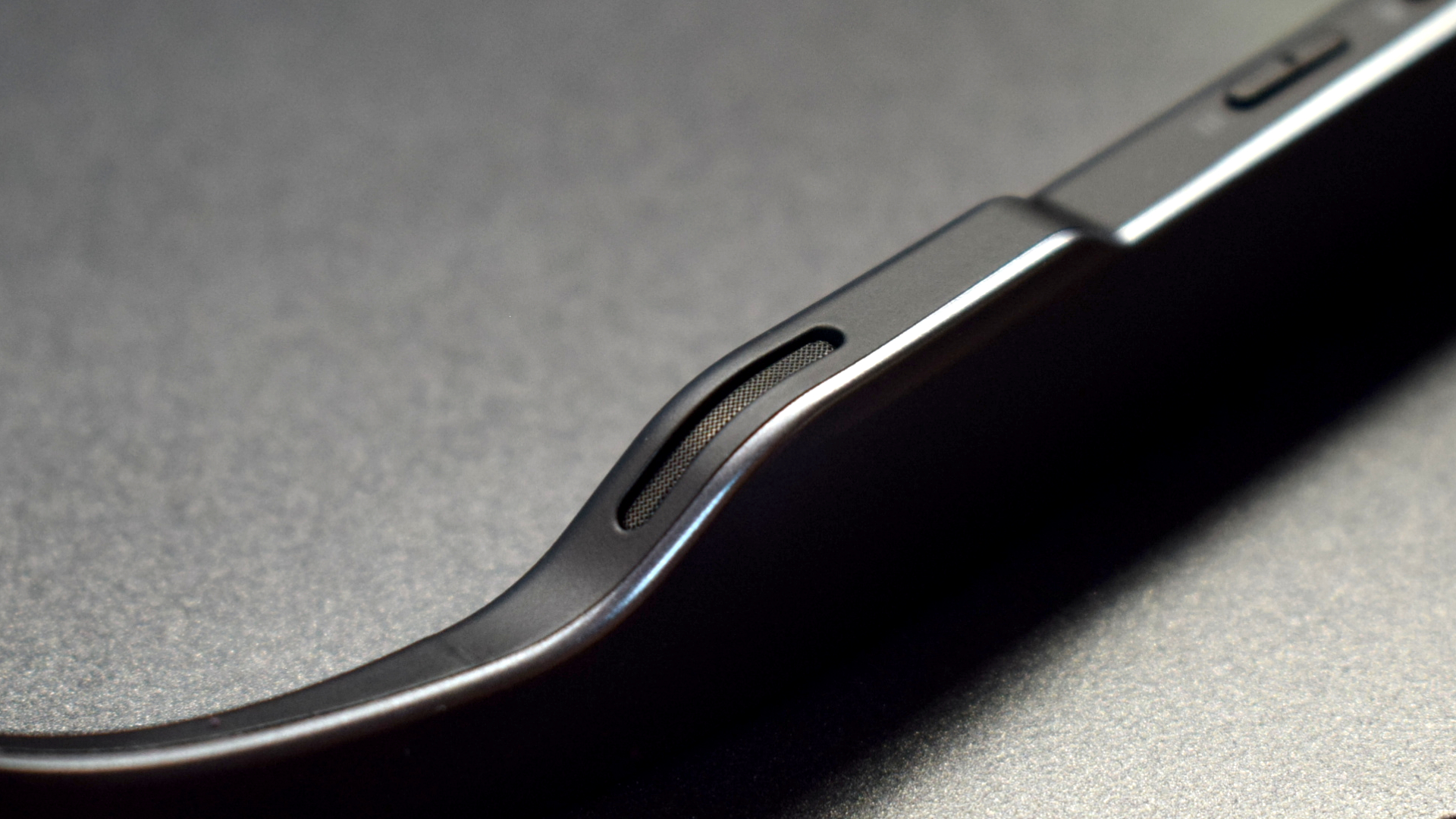
There’s a rich heaviness to the audio that pours out of RayNeo’s frames
Movies, games, or music, whatever you channel through RayNeo’s AR glasses, they’re practically guaranteed to deliver a blast of audio at impressive volume levels without spilling a single drop of that buttery thick bass before it drives like pistons into the furthest reaches of your ear canals.
The audio that pours out of RayNeo’s frames has a rich heaviness, and it’s all thanks to their four symmetric dynamic drivers, tuned to a fine level of excellence. Their expanded diaphragm radiation ara results in higher peak volumes and an equal boost in bass when paired with a 0.7mm stroke. This is high-end audio, superior-quality hardware, and tuning crammed expertly into the Air 2S buffed-up frames.
I watched the music video to Audioslave’s early-2000s riff-ripping "Cochise" through the Air 2S glasses. It may as well have been the best three minutes and fifty-six seconds of my life when it came to open-ear speakers.
I’m not an audiophile, not by any stretch. Those with ears uniquely tuned to recognize the highs, mids, and lows and who understand their impact on the human ear may disagree with me.
But I know there’s something special going on when, over the last week, I’ve routinely reached out to remove earbuds that aren’t there before I prepare to take off the Air 2S glasses.
Bottom line
The TCL RayNeo Air 2S make for a formidable pair of AR glasses, especially if you’re looking for killer audio across all forms of entertainment. However, sub-par software really holds this pair of frames back when it comes to maximizing the potential of its hardware in the same way other AR glasses like the XREAL Air 2 have done.
I know there’s something special going on when over the last week I’ve routinely reached out to remove earbuds that aren’t there
Most of my testing resulted in making use of the very basic screen mirroring feature, which kept the Air 2S feeling a lot like a wearable monitor and devoid of the AR experiences you can achieve with other models, even if you need to invest in further accessories to obtain them.
The result is a headset with stellar audio but static sight. Thankfully, software can be iterated upon and improved over time. Plus, while I can rave about recent developments that benefit devices like the XREAL Air 2 AR glasses, they are still recent developments, and those glasses found themselves in a similar position once also.
The RayNeo Air 2S AR glasses are a brilliant piece of hardware and make for a solid foundation upon which to build. It’s now up to TCL and RayNeo to develop the software that truly unleashes their potential.







